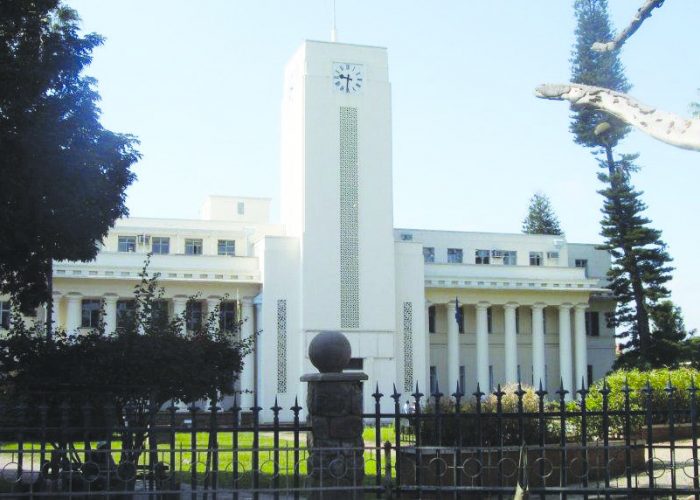


PAGE4
Bulawayo eases water cuts
Ray Ndlovu
Assistant Bureau Chief
 THE Bulawayo City Council (BCC) has relaxed its water rationing programme following the heavy rains that have pounded the country in recent weeks although city fathers have been quick to warn residents to continue using the precious liquid sparingly. Water rationing in the country’s second largest city has been reduced to 24 hours from the 48-hour period which was in place before the rainy season.
THE Bulawayo City Council (BCC) has relaxed its water rationing programme following the heavy rains that have pounded the country in recent weeks although city fathers have been quick to warn residents to continue using the precious liquid sparingly. Water rationing in the country’s second largest city has been reduced to 24 hours from the 48-hour period which was in place before the rainy season.
Before the introduction of the two-day water rationing programme, residents were enduring 72 hours without water, sparking fears of disease outbreaks.
A slight reprieve came after the intervention by Saviour Kasukuwere, the Environment, Water and Climate Minister last year who ordered authorities to pump water to the city from the Mtshabezi Dam.
The city draws its water from six supply dams namely, Insiza, Umzingwane, Lower and Upper Ncema, Inyankuni and Mtshabezi, which have not been filled to capacity.
The last two years had seen some of the dams being decommissioned by the BCC.
The latest ease in the water rationing programme which kicked off on Monday is certain to provide relief to Bulawayo residents and the local industry which had been hard hit by a wave of company closures in the last year caused by operational challenges and a liquidity crunch.
“This (ease in water shedding) has been made possible by some inflows into the city’s dams, which have brought the overall combined percentage total to 40,4 percent as at January 8, 2014,” said Martin Moyo, Bulawayo mayor.
“Although all attempts will be made to stick to the schedule, it is subject to change in cases of emergency without notice. I would like to encourage residents to use water sparingly to avoid rapid depletion and ensure that taps are tightly closed at all times.”
It is understood that the local authority would review the water shedding period every month depending on the dam levels.
To date, the city’s supply dams have received inflows of 23 657 956 cubic metres, leaving the volume of the dams at 169 183 955 cubic metres against a combined capacity of 414 627 700 cubic metres.
At the height of water cuts in 2012, the BCC introduced water cuts lasting up to four days a week, in which it urged residents to flush their toilets simultaneously on Saturday nights so as to unblock sewer systems in what was dubbed the “Big Flush”.
A lasting solution to the city’s water problems is seen to lie with the construction of a pipeline from the Zambezi River through the long drawn out Matabeleland Zambezi Water Project.
newsdesk@fingaz.co.zw
Sorry. No data so far.

